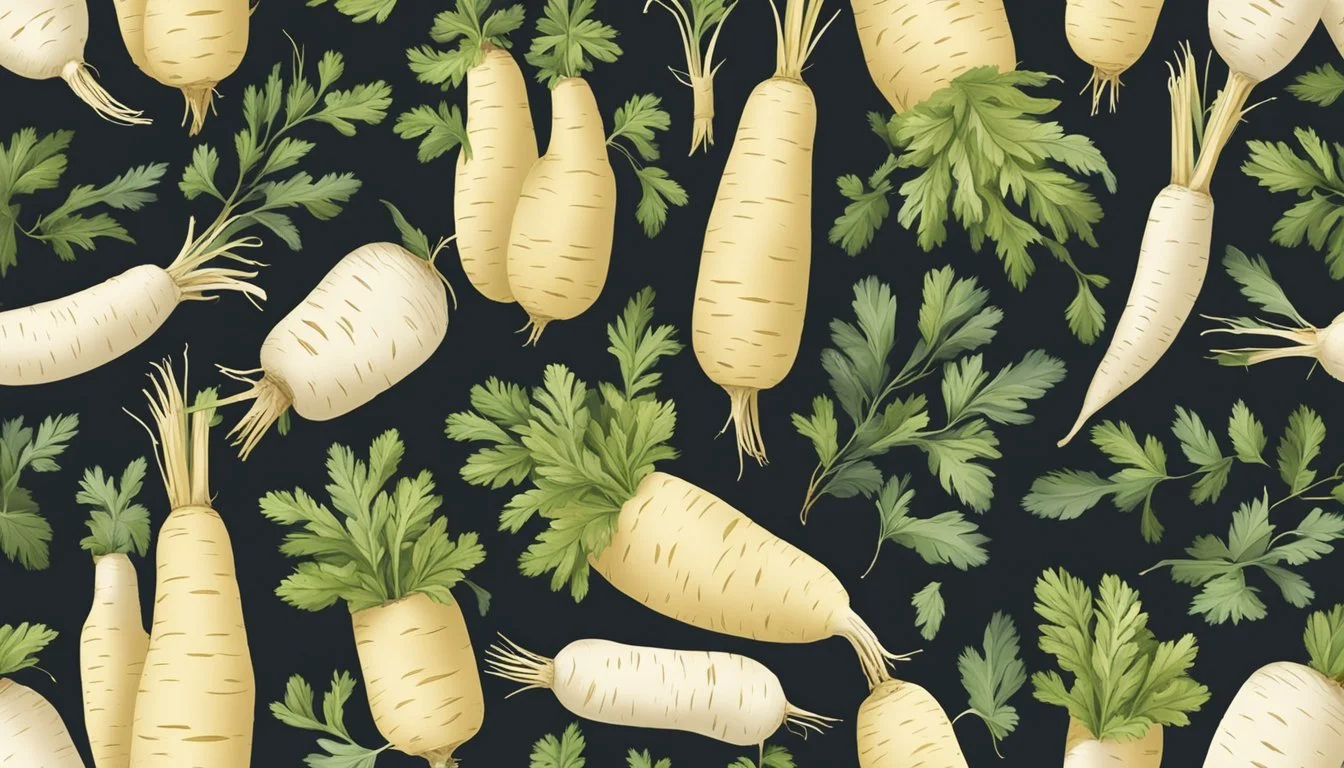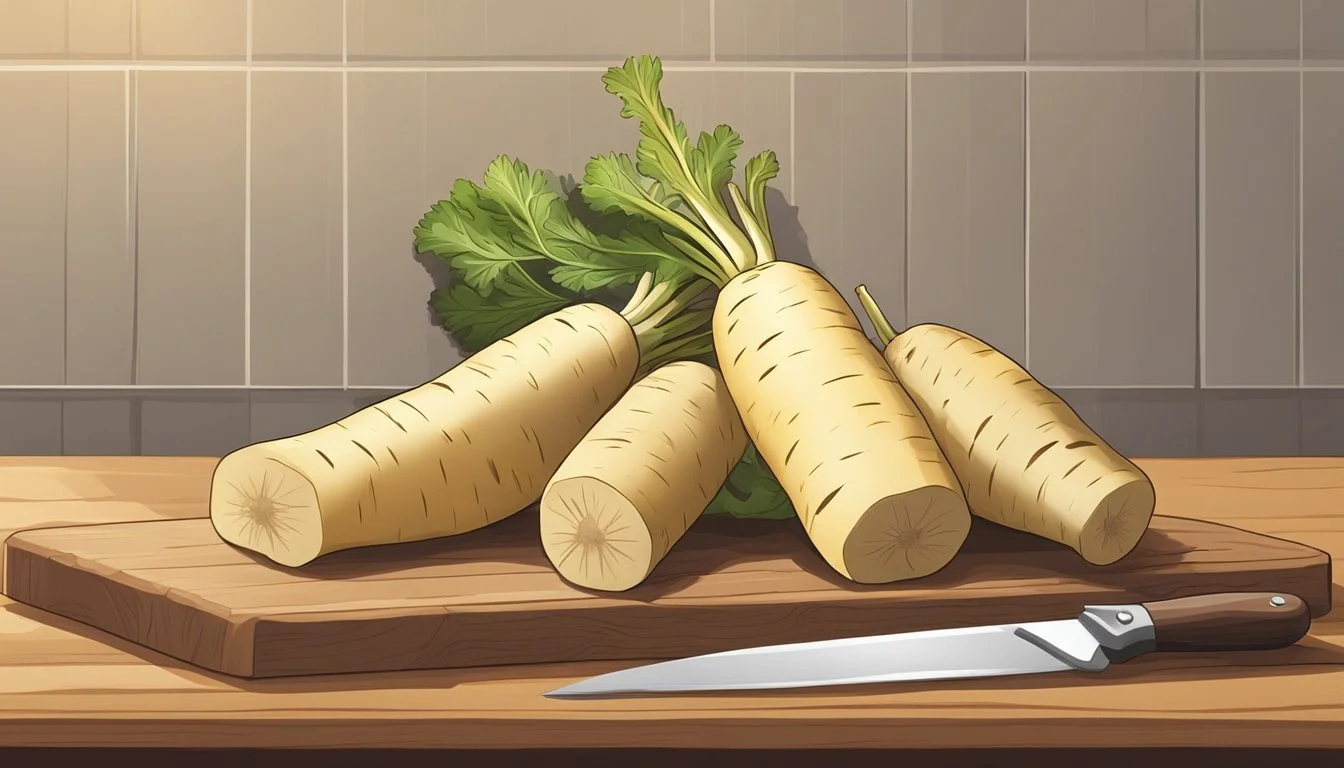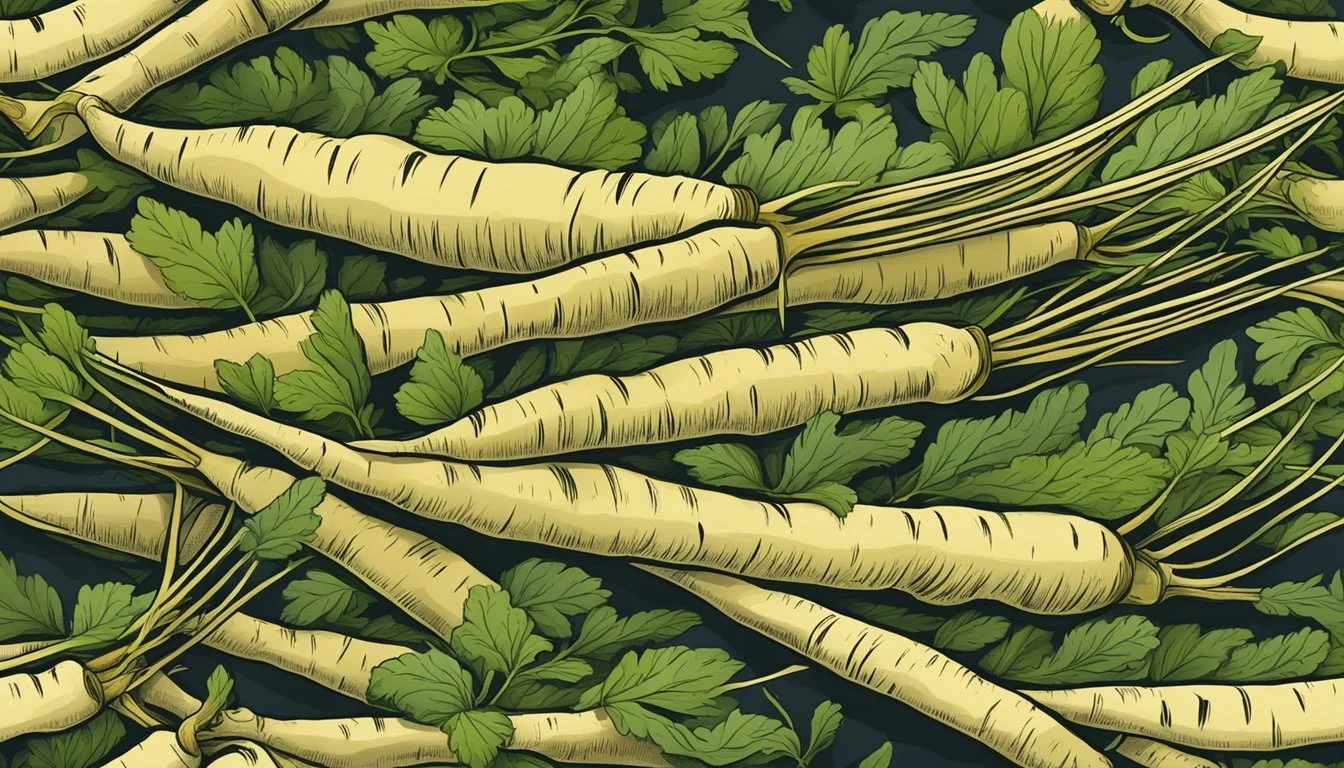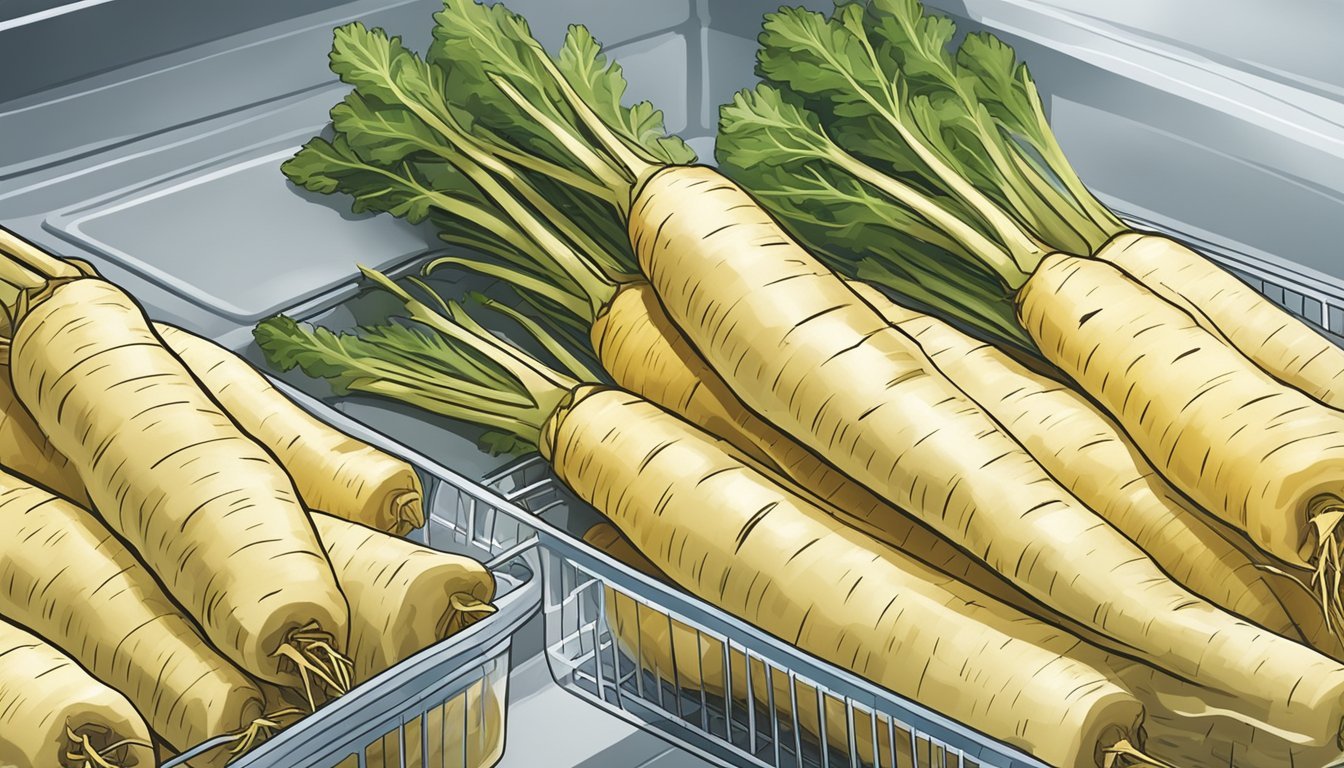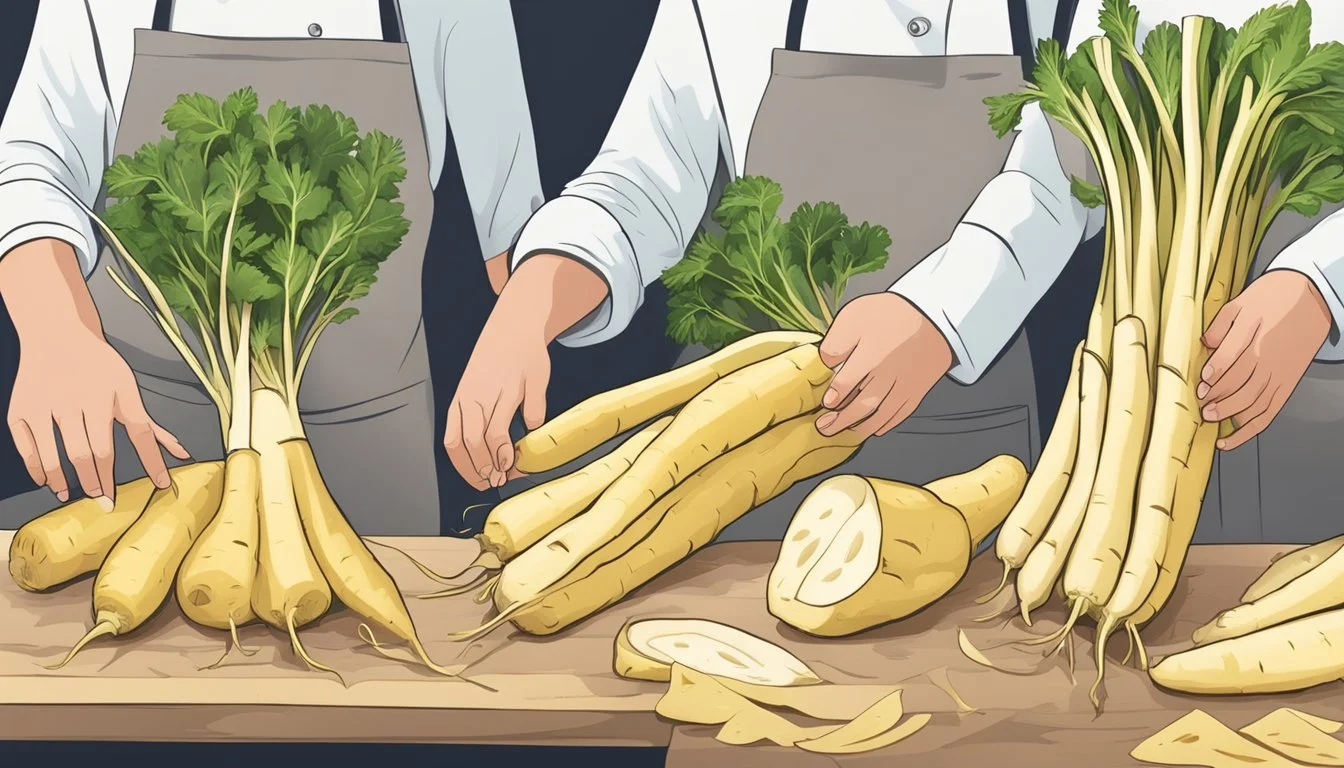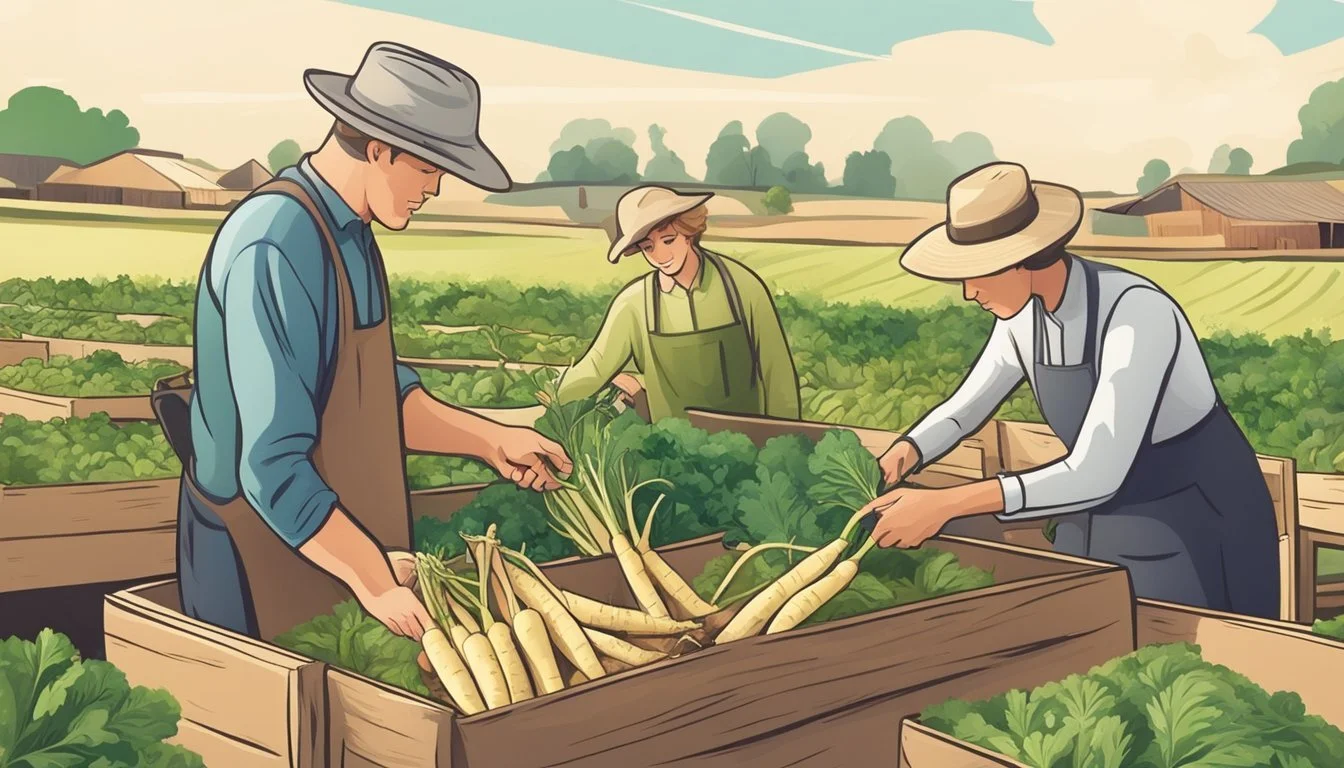How Long Do Parsnips Last?
Shelf Life and Storage Tips
Parsnips, a root vegetable closely related to the carrot and parsley, offer a sweet and earthy flavor that enhances a variety of dishes, particularly soups and stews. Their white, tapered roots are harvested in the fall and can be a nutritious addition to the winter diet. One common question is how long parsnips can be stored before they lose their quality or become unsafe to eat.
While parsnips do not typically come with a use-by date, their shelf life can vary based on how they are stored. Whole parsnips, when kept in a refrigerator, can last for about 2-4 weeks. It's essential to store them in a cool, dark environment, ideally between 32°F to 40°F with high humidity. If parsnips are to be kept for an extended period, they can be preserved for 6-9 months in the freezer, but it is important to blanch them before freezing to maintain their texture and flavor.
The versatility of parsnips allows them to be stored in different ways according to the need. For short-term storage, placing them in water on the counter can extend their freshness for a couple of days, and a similar approach in the fridge can extend their life up to a week. Ensuring the parsnips are kept away from heat sources and not washed until right before use will also help retain their quality for as long as possible.
Identifying Parsnips
Parsnips are a versatile root vegetable and can be recognized by their unique characteristics. They resemble carrots in shape but are typically paler with a creamy white color. When selecting parsnips, one should look for ones that are firm to the touch and free from soft spots or blemishes.
Appearance:
Color: Creamy white
Shape: Tapered, similar to carrots
When it comes to size, parsnips are generally larger and have a bulbous top that tapers down to a narrower bottom. The flesh inside should be solid and sweet, indicative of the root vegetable's freshness and readiness for consumption.
Texture:
Flesh: Firm, sweet when cooked
Parsnips are often found with their greens removed; however, if the greens are present, they should look fresh and vibrant. This is often a good indicator of the parsnip's overall quality.
Greens (if present):
Should be vibrant and fresh-looking
Remember that the outer skin should be unblemished and smooth, and the parsnip itself should feel heavy for its size. It is important not to confuse parsnips with other root vegetables. Its identifiable sweet flavor becomes more pronounced when cooked and sets it apart from its root vegetable peers.
Nutritional Value
Parsnips offer an array of nutrients beneficial to one's health, being particularly rich in fiber and essential vitamins and minerals.
Vitamins and Minerals
Parsnips are a good source of several vital minerals, including calcium and magnesium. A serving of parsnips provides more than 10% of the daily recommended intake of magnesium. This root vegetable also contains antioxidants and a modest amount of vitamin C, although not as much as parsnip leaves, which are also edible and nutritious.
Calcium: Crucial for bone health and function
Magnesium: Over 45 milligrams per cup, supports bone development and other bodily processes
Fiber Content
With only 100 calories, a one-cup serving of parsnips packs in a substantial 6.5 grams of fiber, which aids in digestion and can help maintain a healthy weight. Parsnips' high fiber content, along with their considerable water content of about 79.5%, makes them a satisfying yet low-calorie addition to a variety of diets.
Fiber: 6.5 grams per one-cup serving
Calories: 100 per one-cup serving
Proper Storage Methods
To maintain freshness and extend shelf life, parsnips require appropriate storage conditions that balance temperature and humidity. Here are the optimal ways to store parsnips:
In the Refrigerator
Storing parsnips in a refrigerator involves placing them in a vegetable crisper drawer within a perforated plastic bag to allow air circulation. The ideal temperature range should be between 32°F to 40°F (0°C to 4°C), with a high humidity level of about 90 percent to preserve their crispness and prevent wilting.
Using a Root Cellar
Parsnips can be kept in a root cellar or a similar cool, dark environment like a basement or garage. The space must maintain the necessary conditions similar to a refrigerator's vegetable crisper, offering a consistent temperature range just above freezing and high humidity.
Freezing for Longevity
To store parsnips for several months, one should first blanch them to preserve their texture and flavor. After blanching, place them in an airtight container or a sealed bag before storing in the freezer. This method can keep parsnips fresh for 6 to 9 months.
Shelf Life of Parsnips
Parsnips, as a hardy root vegetable similar to carrots and turnips, can keep well if stored properly. Their shelf life varies depending on whether they're kept fresh or cooked, with storage methods influencing texture and prevention of mold.
Fresh Parsnips
Fresh parsnips can last 4-5 days at room temperature, though it is not ideal as they may become soft and develop soft spots. Refrigeration extends their shelf life considerably. When stored in the fridge, particularly in the crisper drawer, fresh parsnips usually last for up to 2 to 3 weeks without losing their firm texture. For long-term storage, parsnips should be blanched and then frozen, which can preserve their quality for 6 to 9 months.
Room temperature: 4-5 days
Refrigerator: 2-3 weeks
Freezer (blanched): 6-9 months
Cooked Parsnips
Once cooked, parsnips should be refrigerated to maintain food safety and quality. They have a shorter shelf life than their fresh counterparts. In the refrigerator, cooked parsnips are best eaten within 3 to 5 days to ensure they maintain their texture and are safe to consume. It is not typically recommended to store cooked parsnips at room temperature due to the risk of bacterial growth leading to spoilage.
Refrigerator: 3-5 days
For both fresh and cooked parsnips, it is important to check for any signs of spoilage, such as a limp texture or the presence of mold, before consumption. Proper storage in the correct conditions is necessary to maximize the shelf life of parsnips.
Effects of Temperature on Parsnips
Temperature plays a critical role in maintaining the quality of parsnips during storage. The goal is to preserve their firmness and sweetness, while preventing them from becoming soft or woody.
In a Refrigerator, the optimal storage temperature for parsnips is between 32°F to 40°F (0°C to 4°C). At this temperature range, they can maintain their firm texture and natural sweetness for a considerable amount of time. The cold environment helps slow down the processes that lead to spoilage.
Ideal refrigerator conditions:
Temperature: 32°F to 40°F (0°C to 4°C)
Humidity: 90-95%
When parsnips are intended for even longer storage, Freezing is a preferable method. Prior to freezing, it is recommended to blanch the parsnips. Blanching involves a brief immersion in boiling water before being cooled in ice water. This process helps in preserving most of the parsnips' firm texture, flavor, and nutritional value.
Before freezing:
Blanch parsnips briefly
Immediately cool in ice water
Store in freezer-safe containers or bags
Frozen parsnips can last up to 12 months in the freezer, provided they are well-packed and the temperature is maintained at 0°F (-18°C) or lower. It's crucial to ensure that there are no temperature fluctuations that can cause the parsnips to thaw and refreeze, which might lead to a loss of texture and flavor.
By controlling the temperature and environment in which parsnips are stored, one can effectively elongate their shelf life and enjoy their culinary attributes for a more extended period.
Food Safety Considerations
When storing parsnips, it's crucial to manage them in ways that prevent spoilage while remaining vigilant to the signs of decay, as these factors are key in eliminating the risk of foodborne illness.
Avoiding Spoilage
To deter parsnips from spoiling, one should store them in a cool (32°F to 40°F) and humid environment to maintain freshness. Freezing is an effective method for long-term preservation, specifically after blanching, which helps retain quality. Parsnips should be kept in freezer-safe containers or bags when stored in the freezer.
Temperature: Keep at 32°F to 40°F
Humidity: Around 90%
Freezing: Up to 6-9 months (blanch for optimal storage up to 12 months)
Refrigeration: Store in the crisper drawer for up to 3 weeks
Recognizing Bad Parsnips
It is vital to identify signs of spoilage to ensure food safety. Bad parsnips can pose the risk of foodborne illness and should not be consumed. Signs of a parsnip going bad include:
Discoloration: Look for brown spots or an overall dull color.
Texture: Discard if they become mushy or start drying out.
Smell: A strong, unpleasant odor is a clear sign of decay.
Regular inspection of stored parsnips is necessary to catch early signs of spoilage, as spoiled parsnips should be removed promptly to prevent them from affecting others in storage.
Preparing Parsnips for Use
Before utilizing parsnips in various dishes, it is crucial to prepare them properly by cleaning, cutting, and, if necessary, blanching them for optimal storage and cooking results.
Washing and Peeling
When preparing parsnips, one should first wash them thoroughly under cold running water to remove any dirt and debris. Next, peeling is necessary, as the skin can be tough and woody. Use a vegetable peeler or a small knife to remove the outer layer, ensuring the flesh is exposed for even cooking, whether it be roasted, mashed, or fried.
Cutting Techniques
Once the parsnips are clean and peeled, cutting them is the next step. To cut parsnips, create a flat surface by slicing off one side and then lay them flat to prevent rolling. Depending on the desired cooking method, parsnips can be chopped into rounds, halved lengthwise for roasting, or diced for soups and stews. It's essential to cut them into uniform pieces to ensure even cooking.
Blanching Before Freezing
For long-term storage, parsnips can be blanched to preserve their quality. This involves placing them in boiling water for a short period, then quickly transferring them to ice water to halt the cooking process. Once blanched, they should be dried and placed in a freezer bag. Blanching helps maintain their flavor, texture, and nutritional value when they are subsequently frozen.
Cooking with Parsnips
Parsnips, with their sweet and slightly nutty flavor, can enhance a variety of dishes. This root vegetable is versatile in cooking methods including boiling, roasting, and frying.
Incorporating Into Dishes
Parsnips are a starchy root vegetable that become tender when cooked. They are a wonderful addition to soups and stews where they contribute a subtle sweetness that complements other ingredients. Parsnips can be mashed for a side dish with a texture similar to mashed potatoes but with a distinct flavor profile.
Soups & Stews: Add parsnips to soups and stews to impart a hint of sweetness and to thicken the consistency due to their starch content.
Mashed Parsnips: Boil until tender, then mash with a bit of cream, butter, salt, and pepper for a flavorful alternative to traditional potato mash.
Roasted Parsnips: Toss sliced parsnips with olive oil, salt, and pepper, then roast until they are caramelized to bring out their natural sugars and enhance their nutty flavor.
Combining with Other Ingredients
Parsnips play well with many other ingredients. They pair nicely with other root vegetables such as carrots, potatoes, and radishes. Joining them with apples can enhance the parsnip's natural sweetness, while cooking them with onions can add a savory depth.
Roasted with Other Vegetables: Chop and toss with carrots, potatoes, and onions, then roast for a medley of flavors and textures.
Fried Parsnip Chips: Thinly slice and fry for a crispy snacking alternative to traditional chips.
Incorporation of parsnips into various dishes not only brings a unique flavor but also adds nutritional value, as they are rich in vitamins and minerals. Whether mashed, roasted, or fried, parsnips make a nutritious and flavorful addition to any meal.
Parsnip Preservation Beyond Refrigeration
When considering long-term storage of parsnips beyond conventional refrigeration, one can turn to methods such as freezing and canning. These processes ensure the parsnips remain edible for extended periods while maintaining texture and flavor.
Freezing Process
Freezing parsnips successfully involves blanching them first. They should be boiled for two minutes and then promptly placed in ice water to stop the cooking process. Once cooled, parsnips should be drained and packed in airtight containers or freezer-safe bags. It is crucial to maintain proper air circulation around the packages in the freezer to prevent freezer burn. Here is an outline for freezing parsnips:
Blanch: Boil for 2 minutes
Cool: Immediately immerse in ice water
Dry: Thoroughly drain excess moisture
Package: Seal in airtight containers or bags
Freeze: Place in the freezer, ensuring there’s enough space for air to circulate
Canning and Pickling
Canning and pickling are alternative preservation methods that apply to parsnips, though less commonly used. Canned parsnips are typically processed in boiling water canners, and pickling involves submerging the parsnips in a vinegar-based brine. For both canning and pickling, it is necessary to use sterilized jars and follow safe canning practices to prevent contamination. Parsnips should be processed as follows:
Sterilize: Use sterilized jars to prevent bacterial growth
Prepare: Slice or dice parsnips for uniformity in the canning process
Process: Follow recommended canning times and procedures for vegetables
Seal: Ensure jars are airtight before storage
By using these methods, one can extend the shelf life of parsnips beyond what a standard refrigerator could offer, maintaining their quality for future use.
Minimizing Waste
Efficient storage and usage of parsnips are critical in preventing food waste. Below are methods to preserve parsnips and utilize their greens effectively.
Storage Recommendations:
Refrigerator: Store whole parsnips in a plastic bag in the crisper drawer of the refrigerator to maintain freshness for about 4-5 days.
Long-Term Storage:
Refrigeration: Could extend the shelf life up to 1 month.
Freezing: Blanch and freeze them for a period that could reach 6-9 months.
Freezing Process:
Wash and peel the parsnips.
Cut them into uniform pieces.
Blanch in boiling water and then cool in ice water.
Place in freezer-safe containers or bags.
It's important to maintain proper temperature and humidity for parsnip storage. A cool environment at 32-35°F (0-2°C) and a high humidity level of 90-95% is ideal.
When it comes to parsnip leaves, often discarded as waste, they can be put to good use. Parsnip greens can enhance the flavor of soups and stews. Additionally, they can be used in the same manner as other vegetable greens, such as in salads or sautées, provided they are not too coarse or fibrous.
To further reduce waste, one should consume parsnips before they spoil and plan meals accordingly. If soft spots or imperfections occur, these can be cut away, and the remaining parsnip can still be used.
By following these guidelines, individuals can minimize waste and utilize the entire parsnip, including the often overlooked greens.
Harvesting and Buying Tips
When purchasing parsnips, individuals should look for firm roots with a creamy white color. Parsnips can vary in size, but typically, one will want to select medium-sized roots that are about 1 ½ to 2 inches in diameter and 8 to 12 inches long, as these are often the sweetest.
In the garden, parsnip harvesting is best done in the fall. Gardeners often wait until after the first frosts to begin harvesting, as the cold temperatures enhance the natural sugars in parsnips, improving their flavor. When harvesting, one should trim the foliage to within 1 inch of the roots to preserve the integrity of the parsnip.
Buying Tips:
Look for: Firm, medium-sized roots.
Avoid: Soft, discolored, or very large roots which may be woody inside.
Harvesting Tips:
Harvest time: Begin in the fall, post-first frost for sweeter flavor.
Method: Trim green tops to 1 inch, then carefully lift with a spade fork.
If parsnips are purchased from the store with green tops still attached, the tops should be trimmed before storage. Unwashed parsnips tend to last longer, as the absence of additional moisture can prevent rot.
To maximize freshness, raw parsnips should be stored cold and moist, ideally in perforated plastic bags in the refrigerator's crisper drawer, maintaining a temperature range between 32°-40°F (0°-4°C) and a relative humidity of about 95%.
Seasonality and Availability
Parsnips are a hardy root vegetable, primarily in season during the fall and winter months. Their peak availability coincides with the cooler climates of these seasons, as they are typically harvested after the first frost. The frost is said to sweeten the flavor of the parsnips.
Fall: Beginning their season, parsnips are freshly harvested and abundantly available. They offer a fresh quality ideal for autumn recipes.
Winter: Parsnips remain available throughout the winter. They can be stored for use during this season when fewer fresh vegetables are in season.
Availability can extend beyond these seasons with proper storage methods. Here are key points on storing parsnips:
Refrigeration: At home, unwashed parsnips can be kept in the refrigerator where they last for approximately 4-5 days up to a month.
Freezing: To extend their shelf life further, parsnips can be blanched and then frozen. This process can keep parsnips viable for 6-9 months.
When purchasing parsnips outside of their typical season, one may encounter parsnips that have been in cold storage, which helps extend their freshness until they are sold. Buyers should look for firm parsnips, as this indicates that they have been stored properly. It is also essential to avoid parsnips with signs of soft spots or excessive wrinkling, as these are indicators of age and potential spoilage.

